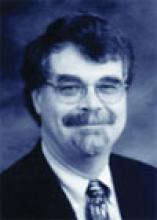User login
Yesterday I tried to explain electroconvulsive therapy (ECT) to my 15-year-old son. Of my three children, he comes closest to idealizing me and is most likely to consider medical school. Still, he was a tough sell. His initial reaction to ECT was “that sounds sort of primitive.”
Dr. Max Fink’s article in this issue reviews the overwhelming evidence for ECT’s efficacy in major depressive disorder and the obstacles that prevent ECT from being used as widely as research suggests it should be. Two obstacles are limited availability (few psychiatrists make it part of their practice) and social stigma. The stigma leads to low availability, which makes ECT available only as a last resort, which in turn increases the stigma.
Dr. Fink identifies a third obstacle as “academic low regard,” meaning that academic psychiatrists relegate ECT to a third- or fourth-line therapy and neglect to teach about it. ECT was introduced before psychodynamic therapies and effective medications revolutionized psychiatry. Consequently, psychiatrists trained in psychodynamics and psychopharmacology pay less attention to ECT than the data warrant.
Repetitive transcranial magnetic stimulation (rTMS)—ably reviewed in this issue by Drs. Sheila Dowd and Philip Janicak—has an advantage over ECT in being new and therefore perceived as exciting. It also is less aesthetically problematic because most people have a more positive attitude towards magnets than electric shocks.
Time will tell where rTMS might fit into our treatment algorithms for major depressive disorder. Taken together, however, ECT and rTMS illustrate how psychiatry can advance by keeping established treatments of proven efficacy while embracing new treatments.
Either because I convinced my son of the benefits of ECT—or because he wanted to avoid conflict—he eventually said, “Well, I guess you have to use whatever works, even if you don’t know exactly how it works.” So true.
Yesterday I tried to explain electroconvulsive therapy (ECT) to my 15-year-old son. Of my three children, he comes closest to idealizing me and is most likely to consider medical school. Still, he was a tough sell. His initial reaction to ECT was “that sounds sort of primitive.”
Dr. Max Fink’s article in this issue reviews the overwhelming evidence for ECT’s efficacy in major depressive disorder and the obstacles that prevent ECT from being used as widely as research suggests it should be. Two obstacles are limited availability (few psychiatrists make it part of their practice) and social stigma. The stigma leads to low availability, which makes ECT available only as a last resort, which in turn increases the stigma.
Dr. Fink identifies a third obstacle as “academic low regard,” meaning that academic psychiatrists relegate ECT to a third- or fourth-line therapy and neglect to teach about it. ECT was introduced before psychodynamic therapies and effective medications revolutionized psychiatry. Consequently, psychiatrists trained in psychodynamics and psychopharmacology pay less attention to ECT than the data warrant.
Repetitive transcranial magnetic stimulation (rTMS)—ably reviewed in this issue by Drs. Sheila Dowd and Philip Janicak—has an advantage over ECT in being new and therefore perceived as exciting. It also is less aesthetically problematic because most people have a more positive attitude towards magnets than electric shocks.
Time will tell where rTMS might fit into our treatment algorithms for major depressive disorder. Taken together, however, ECT and rTMS illustrate how psychiatry can advance by keeping established treatments of proven efficacy while embracing new treatments.
Either because I convinced my son of the benefits of ECT—or because he wanted to avoid conflict—he eventually said, “Well, I guess you have to use whatever works, even if you don’t know exactly how it works.” So true.
Yesterday I tried to explain electroconvulsive therapy (ECT) to my 15-year-old son. Of my three children, he comes closest to idealizing me and is most likely to consider medical school. Still, he was a tough sell. His initial reaction to ECT was “that sounds sort of primitive.”
Dr. Max Fink’s article in this issue reviews the overwhelming evidence for ECT’s efficacy in major depressive disorder and the obstacles that prevent ECT from being used as widely as research suggests it should be. Two obstacles are limited availability (few psychiatrists make it part of their practice) and social stigma. The stigma leads to low availability, which makes ECT available only as a last resort, which in turn increases the stigma.
Dr. Fink identifies a third obstacle as “academic low regard,” meaning that academic psychiatrists relegate ECT to a third- or fourth-line therapy and neglect to teach about it. ECT was introduced before psychodynamic therapies and effective medications revolutionized psychiatry. Consequently, psychiatrists trained in psychodynamics and psychopharmacology pay less attention to ECT than the data warrant.
Repetitive transcranial magnetic stimulation (rTMS)—ably reviewed in this issue by Drs. Sheila Dowd and Philip Janicak—has an advantage over ECT in being new and therefore perceived as exciting. It also is less aesthetically problematic because most people have a more positive attitude towards magnets than electric shocks.
Time will tell where rTMS might fit into our treatment algorithms for major depressive disorder. Taken together, however, ECT and rTMS illustrate how psychiatry can advance by keeping established treatments of proven efficacy while embracing new treatments.
Either because I convinced my son of the benefits of ECT—or because he wanted to avoid conflict—he eventually said, “Well, I guess you have to use whatever works, even if you don’t know exactly how it works.” So true.
